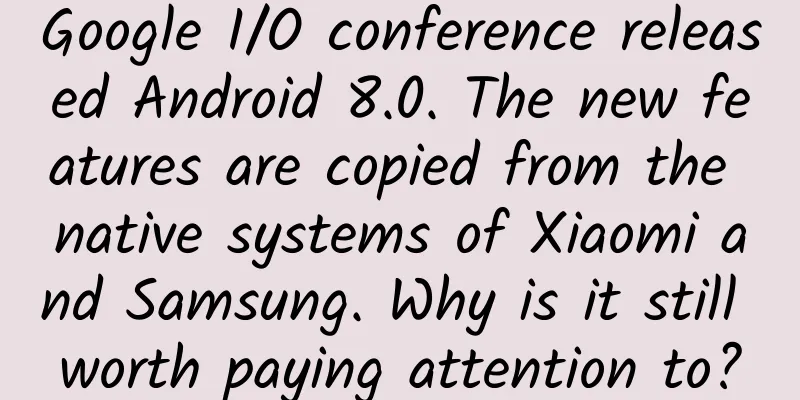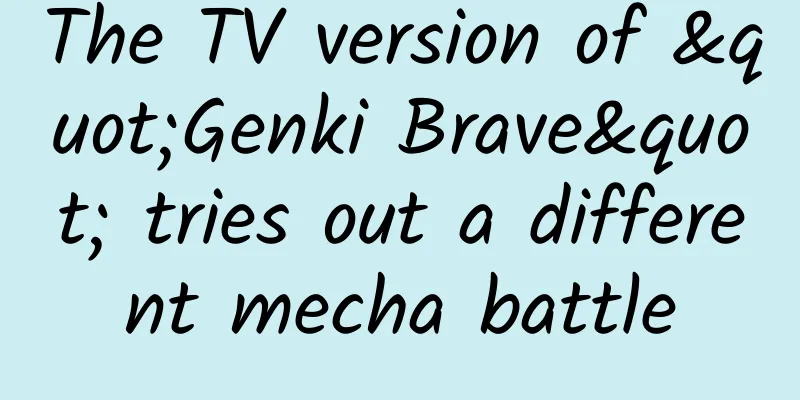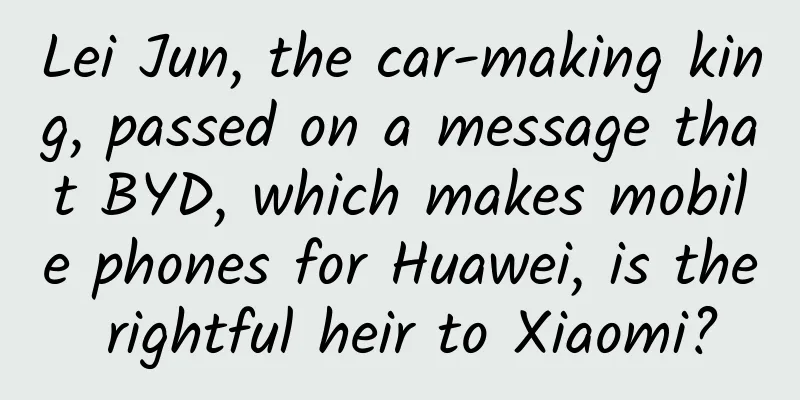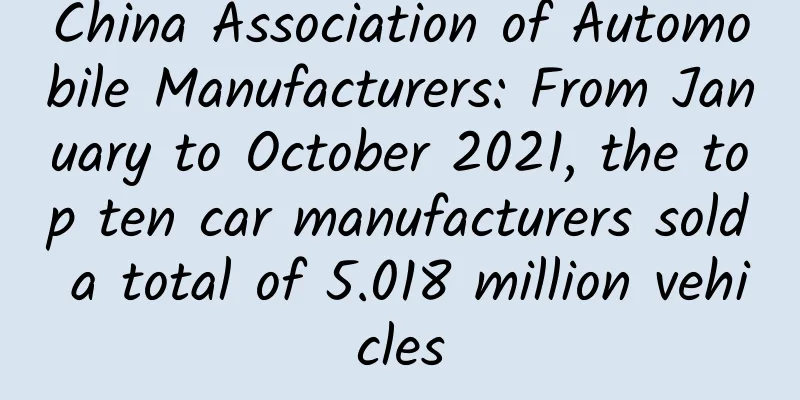Google I/O conference released Android 8.0. The new features are copied from the native systems of Xiaomi and Samsung. Why is it still worth paying attention to?

|
This year's Google I/O developer conference is being held at the Shoreline Amphitheater in Mountain View, California. It is reported that at this conference, Google is still focusing on the strategic direction of "moving from mobile first to artificial intelligence first" and further expanding the artificial intelligence technology in Google's existing product lines. It is reported that at this technology feast, Google will release Google Lens, which can use the camera to understand the content of pictures, centered around artificial intelligence. In addition, Google Assistant, which will soon support iOS and open its SDK, and Google Home, a smart device released last year, were also mentioned. Compared with last year's Google Developer Conference, this year's conference did not bring more shocking black technologies, but more improvements to the user experience. It can also be understood that Google is implementing artificial intelligence technology in various ways and finding users' pain points by solving real problems in life. Under such circumstances, Android O finally unveiled its mysterious veil at the Google I/O Developer Conference. In addition to improving battery life and system security, the Kotlin programming language will also be introduced into Android system development. However, it is a bit disappointing that Android O, which is heavily promoted by Google, has already been popularized by domestic manufacturers, including new features such as picture-in-picture, automatic password recording and completion, etc. Faced with such a native Android system, is it not very timely? The new features are not new and have become a common problem of native Android systems In fact, this is not the first time that Android O has launched new features that are already outdated. Android M released by Google at I/O 2015 also faced the same problem. At that time, the main features of the app permission control, charging and battery life optimization, memory usage optimization, seamless integration of apps and the network, mobile payments, fingerprint recognition, Google photo applications, and offline maps had already been implemented on third-party ROMs. Not only that, when Android version 5.0 Lollipop began to be available to users, the flagship Tap and Go function had already been used by mainstream popular mobile phones such as Samsung S4 and note3. Rich functions are definitely one of the core competitiveness of Android. The reason why Android can occupy a larger market share than iOS is that it has a large number of applications. However, it is also because of this that the loss of the original Android system in terms of functions has become an opportunity for third-party ROMs to grow and develop. Although many people think that each update of the native Android system does not have many highlights and call Google "cheating", is the actual situation really as simple as users think? Stability and uniformity have become requirements that native systems have to face In fact, Google is also very clear about the difference between native Android system and third-party ROM. The stock Android system is more like a "rough house". Although it has advantages in compatibility and fluency, there is still a lot of room for improvement in terms of user experience. On the other hand, third-party ROMs are more like "decorated houses" compared to the stock Android system. Although they meet consumers' diverse needs for applications, third-party ROMs are still customized systems in essence, and their development space still depends on the stock Android system. Therefore, Google has long expected that third-party ROMs will surpass the stock Android system in terms of functionality. It's not that Google doesn't want to change, but it can't. As a leading company in the technology industry, caution has long been deeply rooted in Google's corporate culture. This also determines that Google cannot make deeply customized systems like MIUI and Flyme. On the one hand, Google is different from companies like Xiaomi and Meizu. Google is not only user-oriented, but also manufacturer-oriented. In today's situation where the Android system is so fragmented, Google can only give up certain personalized services in order to ensure the stability of the system, the uniformity of design, and security. This is in stark contrast to third-party ROM manufacturers who try their best to avoid homogenization. Although it is difficult to cater to the needs of the public, the quality is still excellent It is precisely because Google and other third-party ROMs target different groups that the native Android system has advantages that deeply customized systems do not have. The stock Android system has been praised by netizens as being extremely optimized and smooth. In fact, it is indeed true that the stock Android system can be called the smoothest Android system. Although the configuration of Nexus phones is not as good as some flagships on the market, it is impeccable in terms of smoothness. Not only that, the native Android system has significantly fewer bugs. The reason is very simple, because third-party ROMs are all modified from the native system, but the more modifications are made, the more bugs there are. In order to highlight their individuality, third-party manufacturers have changed the Android interface beyond recognition. If Google wants to make the native Android system popular all over the world, it will undoubtedly need to greatly improve the system functions, but this is too difficult. Therefore, in the foreseeable future, native Android will still be a niche in the market. However, even with so many criticisms, the native Android system is undoubtedly a mobile phone system that Google has spent countless efforts and carefully polished. However, at present, it is still somewhat unrealistic to promote it on a large scale in the domestic market. As a winner of Toutiao's Qingyun Plan and Baijiahao's Bai+ Plan, the 2019 Baidu Digital Author of the Year, the Baijiahao's Most Popular Author in the Technology Field, the 2019 Sogou Technology and Culture Author, and the 2021 Baijiahao Quarterly Influential Creator, he has won many awards, including the 2013 Sohu Best Industry Media Person, the 2015 China New Media Entrepreneurship Competition Beijing Third Place, the 2015 Guangmang Experience Award, the 2015 China New Media Entrepreneurship Competition Finals Third Place, and the 2018 Baidu Dynamic Annual Powerful Celebrity. |
<<: Behind the hot capital market of CATL: net profit growth rate increased from 1609.94% to 35.98%
Recommend
Don’t say “pink and tender”, it is the real version of “beautiful scenery in the desert”
There are countless magical and beautiful plants ...
Tujia.com's big data precision marketing solution!
Tujia.com Big Data Precision Marketing Solution P...
Fan Jian's latest Taobao Tmall course in 2022-a series of tutorials to increase conversion rate by at least 200% (advanced)
Fan Jian's latest Taobao Tmall course in 2022...
To help you vent your anger, we will fight violence with violence against the annoying catkins.
There is static electricity in winter and heat in...
The world of mini programs and how to operate them
1) The world of mini programs /direct services Th...
Poor copy conversion? You may have overlooked this.
I guess many copywriters have encountered the abo...
What is the difference between Douyin Sui Xin Tui and Dou+? How to vote with Sui Xin Tui?
Douyin Sui Xin Tui is a paid promotion method . A...
Beijing will conduct a serum antibody survey on the new coronavirus population. What is the use of testing antibodies?
On January 31, Wang Quanyi, deputy director of th...
Computers can't understand the human series in "The Three-Body Problem"? No problem, take a look at this first!
Friends who have read "The Three-Body Proble...
Is rock core more valuable than gold? The "golden key" to the door of "finding oil and gas" is not called that for nothing!
The core is like a thick geological history textb...
10 hot topics that will definitely become popular on Douyin
Hot Template 01: "A Decade of XXX" For ...
BYD has become a "traditional car company". Behind its leading sales, intelligent driving is still an unspeakable pain
Earlier this month, BYD Auto announced the launch...
The vibrant green is actually the color of death?
This painting, in bright green, makes the whole r...
Kuaishou APP operation and promotion skills!
Almost two months ago, the editor launched a poll...
Short video live streaming is not very effective in selling products. Is it useful to insist on publishing works?
The total number of active users on Kuaishou and ...









